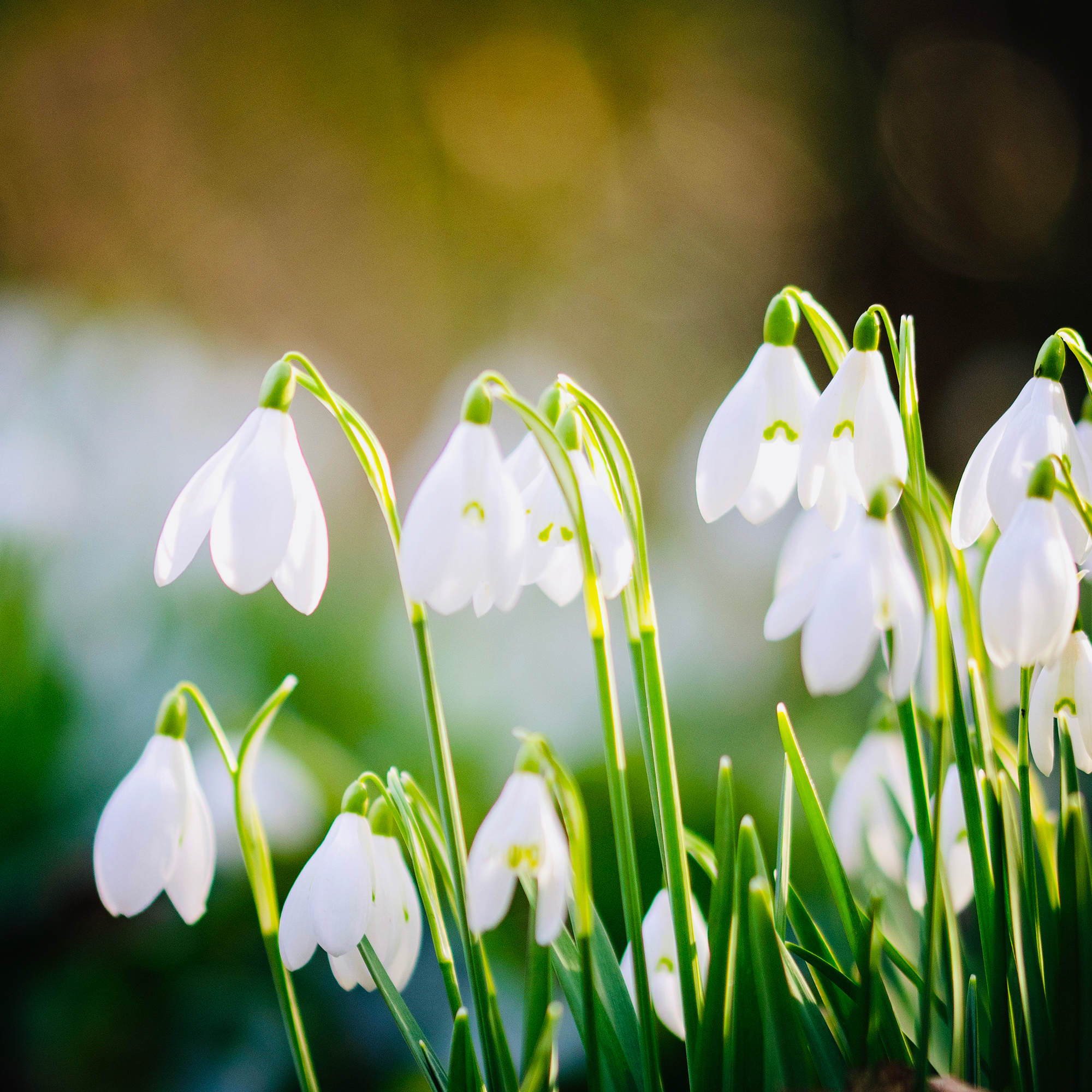How to plant snowdrop bulbs - an easy guide for a stunning winter garden
It’s not too late to fill your winter garden with snowdrops


When many plants hibernate for the winter, the humble snowdrop takes centre stage. This winter bloom does require a little attention beforehand, though, which is why it’s important to understand how to plant snowdrop bulbs.
Flowering between January and March, snowdrops are often a welcome sign that spring is on the way. But you need to know how to plant bulbs and when to plant spring bulbs, because if planted at the wrong time and in the wrong location, snowdrop bulbs could turn your dream garden into a disaster.
That’s why we’ve put together an easy-to-follow guide that will help your winter garden thrive. This is how to plant snowdrop bulbs.
How to plant snowdrop bulbs
If you want to fill your winter garden with these tiny and delicate blooms, you need to know how to plant snowdrop bulbs. Luckily for you, our step-by-step guide has covered everything, from when to plant snowdrop bulbs to how deep you need to plant them.

What you’ll need
- Snowdrop bulbs - like these Thompson & Morgan Single-Flowered Snowdrops (50 bulbs) from B&Q
- Bulb planter - like this Draper Automatic Bulb and Seedling Planter from Amazon
- Compost - like this Miracle-Gro Performance Organics Peat-Free Multi-Purpose Compost from B&Q
- Watering can - like this 10L Ward Watering Can from Argos
Step-by-step
1. Choose the right time
Snowdrops offer delicate and beautiful winter blooms, but only if you plant them at the right time. Steve Chilton, garden expert at LeisureBench, explains, ‘Although it's November now, it's still a good time to plant snowdrop bulbs, as long as you do so before the ground freezes for the first time.’
‘Luckily, this year we haven't really seen any freezing temperatures just yet, so now is still fine for planting snowdrops, in my opinion. Realistically, the perfect time to plant Snowdrop bulbs is between September-November, but it really depends on how the year pans out weather-wise and temperature-wise.
‘For example, if it was particularly cold and we had freezing temperatures in October, it would be too late now to plant them.’
Sign up to our newsletter for style inspiration, real homes, project and garden advice and shopping know-how


Steve is a passionate and knowledgeable garden expert with several years of experience within the field and has developed strong expertise for all things nature and plants. Steve is a keen educator and loves to share this knowledge with others. He strives to simplify complex garden practices and encourage eco-friendly gardening.
2. Select the right location
If you want to guarantee your snowdrops will flower between January and March, you'll need to work out the best place to plant snowdrops. Of course, there’s no doubt about the fact that they’ll fill out garden borders and flower in pots, but they also need the right conditions.
‘Snowdrops prefer partial shade or a bit of sunlight,’ says Steve. ‘They thrive best in moist, well-draining soil.’
In fact, snowdrops are perfect for those who have a north-facing garden. But they should also survive in a south-facing garden, as long as we don’t have a particularly sunny winter.
3. Prepare the soil
We know that snowdrops prefer well-draining soil, but it’s also important to prepare your soil ahead of planting snowdrop bulbs. That’s because the autumn and winter months can be harsh on your garden, and it may need some extra TLC.
When planting snowdrop bulbs, it’s always a good idea to remove any nearby weeds, pick up any loose leaves, and add some compost to your soil to give your bulbs some extra nutrients over the colder months.

4. Plant the bulbs
While there’s not an exact science to planting snowdrop bulbs, it does require some extra attention to detail. After all, you need to make sure that the holes you dig are big enough - especially if you want to stop squirrels from digging up bulbs.
Steve suggests, ‘The holes should be around 3x the depth of the snowdrop bulbs, roughly 8cm. They should also be spaced around 15cm apart.’
When you’ve done that, you should then place a snowdrop bulb root-down into each hole.
5. Cover and water
Once the snowdrop bulbs are planted, back-fill the holes with soil, making sure the bulbs are covered. Be careful when you do this, though, as you don’t want to press down on the bulb too hard and damage it in the process.
Then, finish by giving the bulbs a good water with your watering can. Harry Bodell, gardening expert at PriceYourJob.co.uk says, ‘Water in thoroughly to encourage root development and to settle the soil. You can even lay some organic mulch such as leafmould or bark chips to retain moisture around the bulbs.’

FAQs
What month do you plant snowdrop bulbs?
Ideally, you should plant snowdrop bulbs between September and November. This will give the bulbs the best chance of establishing roots before their January to March blooming period.
However, it’s not the end of the world if you wait until late November to plant your snowdrop bulbs. Just make sure that you plant them before the first frost.
What are the tips for planting snowdrop bulbs?
Choosing the right time and the right location will increase your chances of success when planting snowdrop bulbs.
You don’t want to plant when the weather is too warm, but you also want to plant before the first frost. So, aim to plant snowdrop bulbs between September and November. You should also plant them in a partially sunny location with well-draining soil to ensure they don’t get waterlogged over the winter.
When planting snowdrop bulbs, it’s also a good idea to plant them in holes 3x their size to ensure they’re safe from squirrels and have the chance to really establish their roots.
Snowdrop bulbs can offer guaranteed blooms during the winter months, so it’s essential you plant them properly.

Lauren Bradbury has been the Content Editor for the House Manual section since January 2025 but worked with the team as a freelancer for a year and a half before that. She graduated with a Bachelor’s degree in English and Creative Writing from the University of Chichester in 2016. Then, she dipped her toe into the world of content writing, primarily focusing on home content. After years of agency work, she decided to take the plunge and become a full-time freelancer for online publications, including Real Homes and Ideal Home, before taking on this permanent role. Now, she spends her days searching for the best decluttering and cleaning hacks and creating handy how-to guides for homeowners and renters alike, as well as testing vacuums as part of her role as the Ideal Home Certified Expert in Training on Vacuums, having spent over 110 hours testing different vacuum models to date!